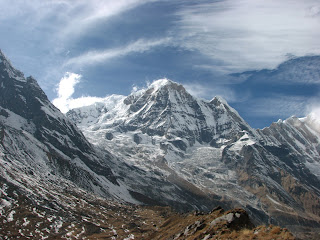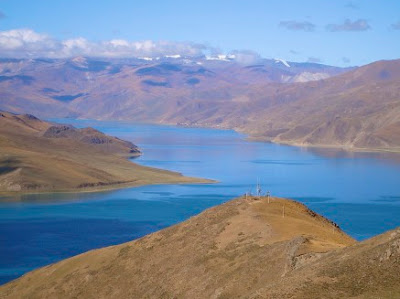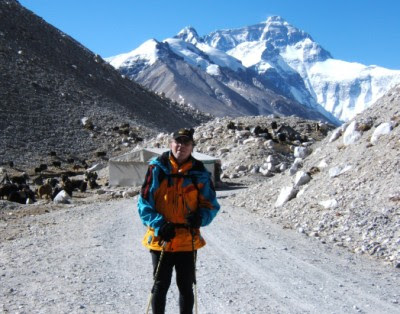one. How's the local climate in
Tibet? Is it incredibly hot in summer months? Could it be extremely chilly in
winter months?
Tibet is in the substantial
plateau, and it belongs to typical downy particular local climate. Climates are
quite unique in numerous places of Tibet. The japanese Tibet which happens to
be in a lower elevation is hotter than western Tibet. In a few mountain areas,
you will find four seasons simultaneously in different altitude. The weather in
the day may differ significantly, much too. The night is cold whilst the day is
heat. It spans 12-15 levels centigrade inside of a one day.
Weather in southeastern Tibet
including Nyingchi and Chamdo is balmy using an regular temperature of eight
levels centigrade; even though in western Tibet (Shigatse and Nagqu) is quite
chilly having an typical temperature listed below zero diploma.
 |
| Namtso Lake |
Having said that while in the
central area of Tibet, the environment of Lhasa and Tsedang is much more
favorable for touring. Travelers can take a look at these two parts all year
all around, not much too very hot in summer season rather than as well chilly
in winter months.
two. How is definitely the street
condition in rainy time of year in Tibet? Need to have I acquire any rainproof
with me?
The wet year in Tibet is
principally from June to August and it does have a extremely bad affect for the
streets. Nevertheless, you can find many track servicing workers and local army
would also give aid to restore the streets. Generally speaking, it only
normally requires a couple of hours to make the roads feasible yet again. As
for your rainproof, you will be proposed to consider raincoat, rain-proof
trousers and shoes if you prefer to trek, climb the mountain or journey a
motorcycle. In case you have team excursions arranged by some travel
businesses, ordinarily you don't really need to require rainproof along with
you, because Tibet generally rains at night as well as weather conditions is
kind of good during the daytime. Aside from, the tourist bus is usually along
with you.
 |
| Jokhang Temple |
three. What's the ideal time for
you to travel to Tibet?
Most of the time, early April
would be the beginning of travel time, which lasts to mid-June every time a
substantial variety of Chinese tourists hurry to Tibet for summer time getaway.
Late June into the close of Nationwide Vacation would be the peak travel time
when some crucial festivals held in Tibet, like Shoton Competition, Gyantse
Dawa Competition and Nagqu horse riding Festival. Just after mid October, Tibet
turns to winter and as the visitors lessen considerably, in excess of fifty
percent of hotels are shut to the poor reservation.
As for your very best time to
travel, it is dependent upon your travel requirement.
one. In order for you an
extremely low cost price, go to Tibet in winter months, from December to next
March. Many of the details are quite inexpensive; even the vacationer web sites
offer 30-50% price cut on entrance cost. Accommodations are low cost, much too.
You could appreciate five star accommodations with less than 100USD including
breakfast. In contrast with touring in August, the fee of your winter months
tour is barely 50%-60% of the summertime tour. Due to the poor quantity of site
visitors, the Potala Palace allows you to spend even a complete day in it.
Moreover, the monks will not be occupied and have spare time for you to chat
with you.
two. In case you like trekking,
do it at Could or September once the monsoon won't ever bother you and also the
weather conditions is balmy and pleasant.
three. In case you love
Mt.Everest and wish to see the very clear face of it, try to avoid the rainfall
time and foggy weather conditions.
4. For those who like to pay a
visit to the grass land in north Tibet, do the tour in July when the flowers
bloom in large grassland and groups of yak and sheep, Tibetan nomad tents
spread all around the grassland.
5. Those that need to push to
Tibet by Sichuan-Tibet highway ought to avoid the rainy season. There will be
mudslides, cave-ins and mire on specified sections with the road, blocking the
passage of automobiles.
About significant altitude
sickness
1. Precisely what is high
altitude illness? What is the symptom of high altitude illness?
Large altitude sickness may
possibly arise at superior altitudes (above 2700m) as a result of the decreasing availability of
oxygen. It always occurs next a speedy ascent and can typically be avoided by
ascending slowly. Signs typically manifest by themselves 6 to 10 hours
immediately after ascent and customarily subside in one to 2 days, but they at
times develop into your far more significant ailments. Typical signs and
symptoms of substantial altitude illness contain shortness of breath, headache,
exhaustion, tummy disease, dizziness, and snooze disturbance.
2. How you can stay clear of or
minimize large altitude sickness?
Hold a fantastic mood, you should not be too
ecstatic or be also apprehensive about significant altitude sickness. Just
before visiting Tibet, get as wholesome as you can, both of those physically
and psychologically.
Consider care of on your own and steer clear
of catching chilly ahead of about to Tibet, and not to consider shower at the to
begin with two times once you are in Lhasa in order to avoid becoming cold, or
else you will quickly suffer from altitude sickness less than weak bodily
condition.
Will not consume any alcoholic beverages about
the initial two days if you find yourself in Tibet. Consume lots of h2o and
take in light, high-carbohydrate dishes for additional power.
Will not operate, soar or do some taxing
positions for the to begin with two times. Getting peaceful and having a good
rest are essential.
When you have the signs or symptoms of
altitude sickness, get some medicine (it is claimed that it really is helpful
to obtain some butter tea in case you can adapt into the flavor of it) and do
not go increased. Prescription medication and oxygen also aid to avoid altitude
illness. Mild altitude sickness symptoms can be taken care of with right
medication. If medication and oxygen really don't relieve the symptoms, head
over to hospital or evacuate straight away to some secure altitude!
Oxygen can assist you alleviate the signs of
altitude illness, but tend not to use it much too typically in Lhasa while your
signs and symptoms of altitude sickness usually are not significant. Should you
experience chilly or feel quite unpleasant, you should go to the nearest clinic
available in the region.
In combination with the conventional medicinal
drugs for traveling it is a good idea to carry high altitude prescription
medication. Seek out strategies out of your health care provider.
Notify your tour guideline easily in case you
don't feel well and follow the guide's tips.
three. What should really I do if
I have high altitude illness just after arriving in Tibet?
You'll find hospitals in lots of
big towns in Tibet. You could adapt to gentle significant altitude illness by
on your own gradually so you could head over to medical center if it is
critical. When you have by now had higher altitude illness, you must rest
effectively, really don't transfer an excess of, keep consuming, drink some
drinking water with black sugar or take some medicine. In the event the high
altitude sickness is rather significant, you ought to visit hospital, or
descend to some lessen areas, or depart Lhasa straight away. Superior altitude
sickness shall vanish once you descend to certain altitude and it's got no
sequel indicators.
four. Is significant altitude
sickness additional severe if about to Tibet by aircraft than by coach?
Specifically, but both equally
signifies have their benefits and drawbacks. That you are a lot more prone to
have high altitude illness simply because you really don't have adequate time
for you to adapt towards the plateau environment step by step in the event you
go by airplane. The altitude adjust is straight from quite a few hundreds
meters to over 3000 meters. Although, if you go to Tibet by coach, you'll be
able to adapt one's body for the higher plateau ecosystem bit by bit and
slowly. Then, you could ease or steer clear of substantial altitude illness.





















